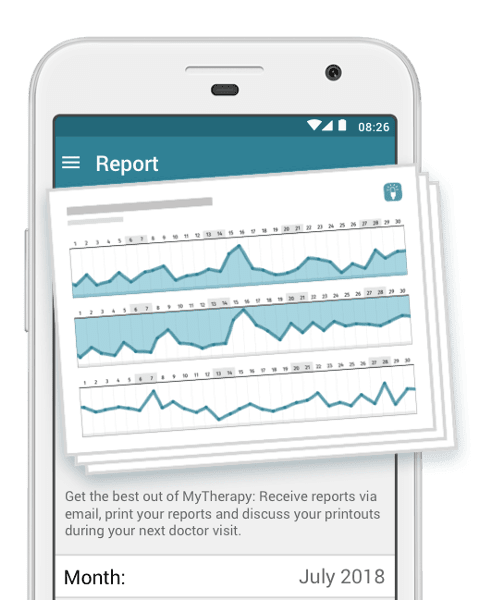Smartphones, fitness trackers, smart watches, and chest straps make it possible to track your heart rate around the clock. Doing so could not only improve your exercise regime but detect potentially life-threatening conditions such as atrial fibrillation. Keep reading to find out how they work; their accuracy, strengths, and weakness; and whether the information can really help you.
Heart Rate Monitors
Electrocardiograms (ECGs) are the gold standard for measuring heart rate. However, because they are generally performed in a clinical environment, they only provide a snapshot of your heart rate at that moment.
Nowadays, there are apps that claim to turn our smartphones into heart rate monitors and wearables, such as smart watches, that have them built in.
That creates the possibility to measure your heart rate anywhere, at any time. Doing so may help you maximize your fitness regime or even detect a heart condition such as atrial fibrillation.
So, how accurate are these devices and should you be using one?
What is Photoplethysmography?
As well as being a tongue-twister, photoplethysmography (PPG) is a method of measuring heart rate.
It works by shining a light onto a patch of skin and measuring the reflection with a light sensor. The way light is scattered, and thus the amount of light reflected, varies depending upon blood flow and therefore changes with your pulse. Algorithms detecting these changes are able to estimate your heart rate based on the fluctuation of light being reflected.
If you have ever been to hospital and had your heart rate measured with a clip on your finger, ear, or toe, those clips use PPG.
Using PPG Heart Rate Monitoring in Smartphones
When it comes to your phone, the flash acts as the light source, and the camera as the sensor.
Apps use two forms of PPG: contact and non-contact. When using the former, you place your finger directly over the camera, while non-contact apps require you to simply point your camera at your face.
A study performed last year put four such apps – two contact and two non-contact – to the test. The measurement given by the apps were compared to those from medically-approved professional devices.
The contact PPG apps were more accurate than the non-contact. One, called ‘Heart Fitness’, yielded particularly impressive results when compared to the professional equipment. However, the fact apps using the same hardware yielded different results highlights an important issue.
“The difference in performance between the contact apps is probably down to the algorithm the app uses to calculate heart rate which is commercially confidential,” according Dr. Christophe Wyss, a cardiologist at Heart Clinic Zurich and author of the study.
“It means that just because the underlying technology works in one app doesn’t mean it works in another one and we can’t assume that all contact heart rate apps are accurate.”
A thoroughly unscientific test I just conducted with three of the most popular apps suggests the same problem. One app consistently gave results around 10 beats per minute (BPM) higher than the other two. Without testing with professional equipment, it is impossible to determine which figure, if either, is accurate.
Want to try a heart rate monitor app for yourself?
It could be argued that even calling these apps heart rate monitors is misleading. They are not medical devices and are not subject to regulation, making it extremely difficult for consumers to gauge their accuracy.
Accuracy issues aside, tracking your heart rate throughout the day be not even have any tangible benefits.
According to Clinton Brawner, a clinical exercise physiologist at Henry Ford Hospital in Detroit: “For a typical person, to monitor the heart rate throughout the day … there’s no research saying how that can be useful yet, beyond just providing a number that some users might find interesting.”
However, there is another method that may be more beneficial.
Smart Watch Heart Rate Monitoring
These days, almost all smart watches and fitness trackers have heart rate monitors built into them, which also use PPG measurements.
Unlike your smartphone, the lights and optical sensors are specifically designed for the job of measuring your heart rate and can incorporate more sophisticated technology, such as lights of different wavelengths, which should improve accuracy.
In this respect, Apple appears to be leading the way. A study published last year found the Apple Watch to be one of the most accurate, alongside the Mio Fuse.
When the Apple Watch Series 4 was released earlier this year, the FDA approved two apps that use the heart rate sensor to detect atrial fibrillation as Class II medical devices. You can read more about that here:
The key advantage smart watches have over smartphones is that they are in constant contact with the skin while worn, so are able to monitor your heart rate without you needing to perform a specific action. It is this continuous monitoring that helps detect irregular heartbeats, which are often sporadic so may be missed when having your heart rate measured intermittently.
The main drawback with tracking your heart rate using a smart watch is that PPG monitoring struggles to cope with movement. The variation in light reflection caused by your heart rate is typically around 2%, according to The Conversation. Heavy movement, however, creates much greater changes in lighting conditions, thus masking the variation caused by your blood and, at times, making it almost impossible to accurately calculate heart rate. Algorithms can only do so much to account for the corrupted signal.
That is why practically every study investigating the accuracy of wrist-worn heart rate monitors – and there have been many – has found a significant correlation between an increase in movement and a decrease in accuracy.
The obvious problem with this is that many people purchase smart watches to track heart rate during exercise, which involves plenty of movement. This is especially true if the watch doesn’t fit perfectly, or if someone with relatively small wrists wears one of the larger devices.
The likes of Fitbit and Garmin stress that they cannot guarantee accurate readings and that their watches and trackers are not medical devices, but that did not prevent the former being subjected to a class-action lawsuit that said Fitbit heart rate monitors are “grossly inaccurate and frequently fail to record any heart rate at all.”
Other posts you may be interested in on the MyTherapy blog:
- Apple Watch: Why Tim Cook Bets on Diagnosing Atrial Fibrillation
- How Apple’s Health Records App is Helping Put Healthcare into Your Hands
Ultimately, no matter how advanced the hardware or algorithms become, PPG monitoring is fundamentally limited. The limitations are most notably exposed, ironically, when used in the exact way many people buy them for: exercise.
Part of the problem is that PPG monitoring does not directly measure what the heart is doing. There is, however, a wearable that does.
Chest Strap Heart Monitors
While PPG monitors use light to determine blood flow, chest straps use electrocardiography to measure the electric impulses your heart transmits each time it beats. They have been available for years and, while they may not be as comfortable as watches, they are yet to be matched for accuracy.
A 2017 study found a chest strap (Polar H7) to be 99.6% accurate across all exercise conditions, when compared to a professional-grade ECG.
The accuracy of the watches tested, as well as an arm band that also uses optical sensors, ranged from 92% (Apple Watch) to 67% (Fitbit Blaze).
Chest straps have an electrode pad that sits against your skin and a transmitter to send the information to your watch or smartphone.
The big question is, unless you are a professional athlete, whether you require this level of precision and whether the data is beneficial to your fitness regime.
There is a commonly-quoted method of calculating what your maximum heart rate should be (220 minus your age) and the ranges in which your heart rate should fall during workouts of different intensities. However, it is widely debated how important this really is. Professor John Brewer, head of the school of sport, health and applied science at St Mary’s University in the UK told The Guardian: “[There] is a fundamental flaw in the 220-minus-age theory. It’s a rather inaccurate measure of fitness, an approximate calculation. It tends to result in a rather too cautious measure of maximum heart rate for older, fit people.”
Tracking heart rate and keeping it within certain ranges during exercise is more important for some people than others. If you are unsure, speak to an exercise physiologist, personal trainer, or your doctor about your own personal circumstances.
What Does This All Mean?
The usefulness of using your smartphone or wearable devices comes down to what you want the information for.
At rest, your phone is capable of providing relatively accurate data. However, the numbers provided by different apps can differ significantly, so results should be taken with a pinch of salt.
A smart watch is a step up, and the ability to track continuously makes it possible to detect irregular heartbeats. At the moment, only Apple Watch apps have been approved by the FDA for this purpose, but it is probably a safe bet that other companies are working to follow suit.
This is arguably the most important way in which at-home heart rate monitors are being put to use, as atrial fibrillation often goes undetected because of the lack of symptoms. Increasing the detection rate will save lives, as people living with atrial fibrillation are five times likelier to have a stroke than the general population.
Finally, if you are serious about tracking your heart rate during exercise, chest straps are the reliable option once more intense movement is involved.
Ultimately, it is important that consumers are aware of the strength, weaknesses, and limitations of the heart rate monitors discussed. If you are, you can make an informed decision about which – if any – suit your lifestyle and your needs.
Take a look at some of the other posts on the MyTherapy blog:



